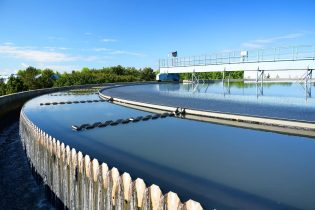Over the past two decades, more than 80 metropolitan cities across the world have faced severe water shortages due to droughts and unsustainable water use. Future projections are said to be even more alarming since urban water crises are expected to escalate and most heavily affect those who are socially, economically, and politically disadvantaged.
According to a study published in the journal Nature Sustainability, the swimming pools and well-watered gardens of the rich are driving water crises in cities at least as much as the climate emergency or population growth. The study asserts the vast difference in water use between rich and poor citizens has been largely overlooked in seeking solutions to water shortages, with the focus instead on attempts to increase supply and higher prices for water. The researcher – Prof Hannah Cloke, at the University of Reading, UK, and co-author of the new study – said the only way to protect water supplies was by redistributing water resources more equally. The study used Cape Town as a case study and found the richest people used 50 times more water than the poorest. When the Day Zero water crisis struck the city in 2018, after several years of drought, the poorest were left without enough water for their basic needs, the scientists said. Cape Town was not unique, the researchers said, similar problems have been seen in many cities around the world. Since 2000, more than 80 big cities had experienced extreme drought and water shortages, including Miami, Melbourne, London, Barcelona, São Paulo, Beijing, Bengaluru and Harare. The study, which shows how social inequalities across different groups or individuals play a major role in the production and manifestation of such crises, asserts that urban elites are able to overconsume water while excluding less-privileged populations from basic access.Through an interdisciplinary approach, researchers modeled the uneven domestic water use across urban spaces and estimate water consumption trends for different social groups.
The study used data to develop a model of city water use that took account of different income levels. In Cape Town, it found the richest group – 14% of the city’s population – used 51% of the water consumed in the city. In contrast, the poorest group – 62% of the population – used just 27% of the water. Most of the water used by the richest group was for non-basic needs. The model, which could be applied to other cities, showed that changes in water use by the richest group had a bigger impact on overall water availability than changes in population or droughts related to the climate crisis. The researchers also said increased use of private boreholes in times of shortage by the richest citizens substantially depleted groundwater resources. “Climate change and population growth mean that water is becoming a more precious resource in big cities, but we have shown that social inequality is the biggest problem for poorer people getting access to water for their everyday needs. Our projections show this crisis could get worse as the gap between the rich and the poor widens in many parts of the world. Ultimately, everyone will suffer the consequences unless we develop fairer ways to share water in cities,” said Prof Cloke. The researchers said urban water crises were expected to become more frequent, with more than 1 billion city dwellers expected to experience water shortages in the near future. The scientists said failing to account for social inequality in a water crisis often led to technocratic solutions that simply reproduced the uneven and unsustainable water use patterns that contributed to the water crisis in the first place.






